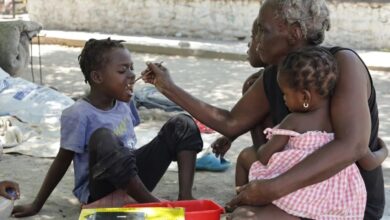Severe Hunger Detected in the Dry Corridor of Central America

Over four million people in El Salvador, Guatemala, and Honduras—nations forming the Central American Dry Corridor—are facing urgent food assistance needs due to prolonged droughts caused by El Niño, devastating their subsistence farming.
In the Central American Dry Corridor, encompassing El Salvador, Guatemala, and Honduras, over four million people are grappling with the harsh realities of severe food insecurity. This crisis has been exacerbated by the phenomenon known as El Niño, which has led to prolonged drought conditions, decimating the subsistence crops that many vulnerable farming families rely on.
Central America’s Growing Food Insecurity Crisis
Iván López, Oxfam’s Humanitarian Manager in Central America, highlighted that the need for food assistance in these regions is most acute during the seasonal hunger period from May to August. Unfortunately, the situation is deteriorating not only in rural areas traditionally affected by these climatic events. Still, it also extends into urban zones and areas previously unaffected by the dry corridor’s harsh conditions.
The number of individuals facing moderate to severe food insecurity—those who have had to reduce both the quantity and quality of their food intake—has risen by 21.4% across the three countries, reaching over four million people this year, up from 3.3 million in 2023.
Guatemala bears the brunt of this crisis, with 2.5 million people lacking regular access to sufficient food, followed by Honduras with one million, and El Salvador with over 590,000. Many of these families live in precarious conditions, exacerbated by structural vulnerabilities that have not been addressed, including low incomes and dependence on fragile subsistence agriculture highly susceptible to climate impacts.
López emphasized the disproportionate effect of food insecurity on households led by women. There is a notable disparity in Honduras, where the rate is 7.7% higher than in households led by men, followed by Guatemala at 5.2% and El Salvador at 3.3%. These figures reflect broader systemic issues that affect food distribution and access within these communities.
Impact of Climate Change on Agricultural Production
According to Oxfam’s report, “El Niño phenomenon: A Dream Unfulfilled in Central America’s Dry Corridor,” up to 56.9% of households in the Dry Corridor lost more than 70% of their maize production, and 57.4% saw similar losses in their bean crops, staple foods that form the cornerstone of their diet and economic stability.
The role of El Niño in causing these prolonged droughts, alongside rising food prices, is pivotal in understanding why so many people are now in dire need of food assistance. López pointed out climate change increasingly complicates food production, especially in regions lacking proper irrigation systems or suitable technology.
The response from local governments in El Salvador, Guatemala, and Honduras has been criticized for being ineffective in terms of investment and targeting resources to mitigate this food crisis. Currently, only 15% of the population in these countries receive any form of humanitarian aid or social protection, yet 85% of those who do not receive help desperately need it.
López warns that if the current conditions persist, chronic malnutrition among children under five could increase, urging governments to implement cash transfer programs to help alleviate the immediate needs.
Promoting Sustainable Solutions
Moreover, he advocates for strengthening small-scale and subsistence agriculture to help producers cope with increasingly frequent climate crises and enhance their resilience. This approach addresses the immediate food security issues and contributes to long-term sustainable development by ensuring that local farmers can continue to cultivate their land and support their communities.
Also read: Young Women Lead Climate Action in the Caribbean
The crisis in the Dry Corridor of Central America is a stark reminder of the region’s broader challenges in terms of climate change, economic vulnerability, and food security. As these countries continue to navigate these challenges, international cooperation and effective local governance will be crucial in supporting those most at risk.





